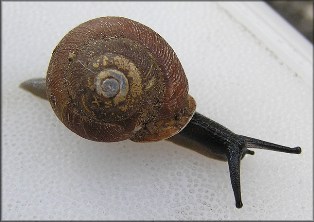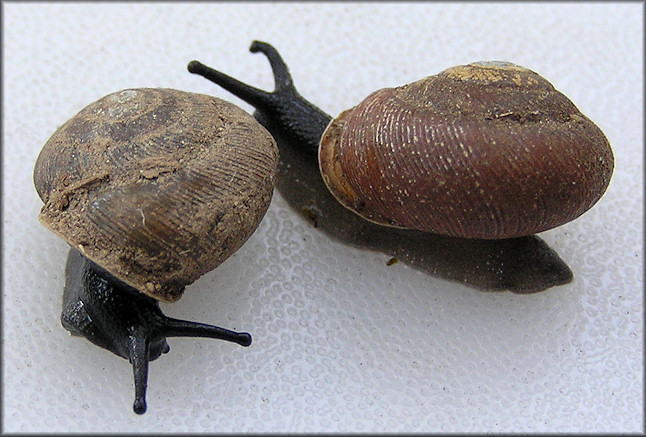Classification
Kingdom: Animalia
Members of this kingdom are
heterotrophic and multicellular(Hickman et al. 2009).
Phylum: Mollusca
Mollusks can be defined by their
foot, mantle, and visceral mass (Hickman et al. 2009). They are soft-bodied, unsegmented coelomates (Burch 1962). They have a open circulatory system
with hemolymph instead of blood and most mollusks have a shell made of
calcium carbonate(Hickman et al. 2009). All Mollusks posses a radula
which is used for
scraping for food (Hickman et al. 2009).
Class: Gastropoda
Gastropods are distinguished by the
torsion of their visceral mass (Hickman et al. 2009). This is where the anus is twisted
and positioned above the head (Hickman et al.
2009). Gastropods are either herbivorous, carnivorous or parasitic (Hickman et al. 2009).
Order:
Stylommatophora
Snails in this order are
characterized by having two pairs of retractable tentacles; on top of
the larger pair is where the eyes are located (Burch 1962).
Family:
Polygyridae
Polygyridaes have helical shaped
shells with reflected lips, this means the opening of the shell is
turned outward (Burch 1962). The lip of the shell also
has toothed
apertures for protection from desiccation (Burch 1962). Polygyridaes lack the formation of love darts which are used by other gastropods
during courtship (Burch 1962).
Genus: Fumonelix
Members of this genus have large
shells, no larger than 35mm, which are
usually brown (Grimm et al. 2009).
Species: Fumonelix wheatleyi
Former
species name before 1991: Mesodon
wheatleyi (NatureServe 2010)
This species possesses a shell with
about five and a half whorls with transverse striae rather than spiral
striae (Dourson 2006). They also have a small parietal tooth (Dourson
2006). Young snails may have short, fine hairs (Dourson 2006).
Latin meaning of
Fumonelix: covert
Meaning behind wheatleyi: wheatleyi doesn't have a
Latin root but more than likely the founder of this snail named the
snail after a person with the last name of Wheatley!
Common Name: Cinnamon Covert
